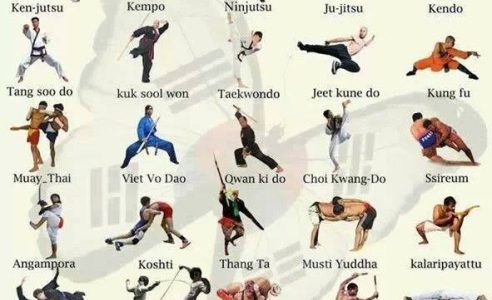Checking Out The Distinctions In Between Traditional Martial Arts And Contemporary Fight Sports
Checking Out The Distinctions In Between Traditional Martial Arts And Contemporary Fight Sports
Blog Article
Writer-McGinnis Rocha
When you consider martial arts, do you lean more toward the typical methods or the modern-day combat sporting activities? Each path uses special benefits and experiences, formed by their viewpoints and training methods. Traditional martial arts highlight individual development and self-control, while modern combat sporting activities focus on competition and efficiency. Comprehending these differences can direct you in choosing the best method for your journey. But how do these differences manifest in training and philosophy?
The Ideology and History Behind Typical Martial arts
While many individuals connect martial arts with physical battle, the ideology and history behind standard martial arts run much deeper. You'll locate that these disciplines stress personal development, self-control, and respect.
Stemming from https://www.whiskeyriff.com/2023/04/17/willie-nelson-reflects-on-his-black-belt-martial-arts-training-all-we-know-how-to-do-is-fight-fck-throw-rocks/ , conventional martial arts were usually developed for Self-Defense and spiritual development. They embody principles such as balance, consistency, and self-control, guiding specialists past mere battling abilities.
As you educate, you'll not just find out strategies but additionally acquire understandings into the society and values that shaped these arts. The routines and traditions, often given through generations, promote a feeling of community and belonging.
The Competitive Nature of Modern Fight Sports
Modern combat sporting activities have actually changed the landscape of martial arts right into an extremely competitive sector, where professional athletes challenge in an examination of ability, strategy, and endurance.
Kids self-defense 'll see that competitions are often organized with strict regulations and laws, guaranteeing justice and security. These occasions bring in large target markets, sustaining the enjoyment and strength of competitions.
Professional athletes train rigorously, not just for physical expertise however also for psychological strength, recognizing that every detail counts in the ring. The adrenaline rush during competitions is palpable, as fighters press their restrictions to claim triumph.
Followers value the athleticism and creativity entailed, making contemporary fight sporting activities a thrilling phenomenon that continues to develop and captivate fanatics around the globe.
Training Techniques and Strategies: A Relative Analysis
The affordable environment of contemporary battle sports demands innovative training approaches that vary dramatically from traditional martial arts.
In modern training, you'll concentrate on details strategies, sparring, and conditioning, commonly using drills that mimic actual fight scenarios. You'll see an emphasis on quantifiable performance and regular competition to analyze your abilities.
In contrast, typical martial arts prioritize types, katas, and thoughtful mentors, frequently emphasizing technique and respect over competition.
Training is typically less intense and may entail repetitive practice as opposed to real-time sparring.
While both approaches develop ability and fitness, contemporary battle sports offer a more vibrant and adaptable training setting, preparing you for instant difficulties in the ring or cage.
Pick the course that aligns with your objectives and passions.
Final thought
In picking in between standard martial arts and modern-day combat sports, it really boils down to what you value many. If you're looking for personal growth, technique, and a sense of area, traditional arts might be your best fit. Yet if you prosper on competition and real-time difficulties, modern fight sporting activities could be the means to go. Ultimately, both courses supply special benefits, so it's all about aligning your training with your individual objectives and rate of interests.
